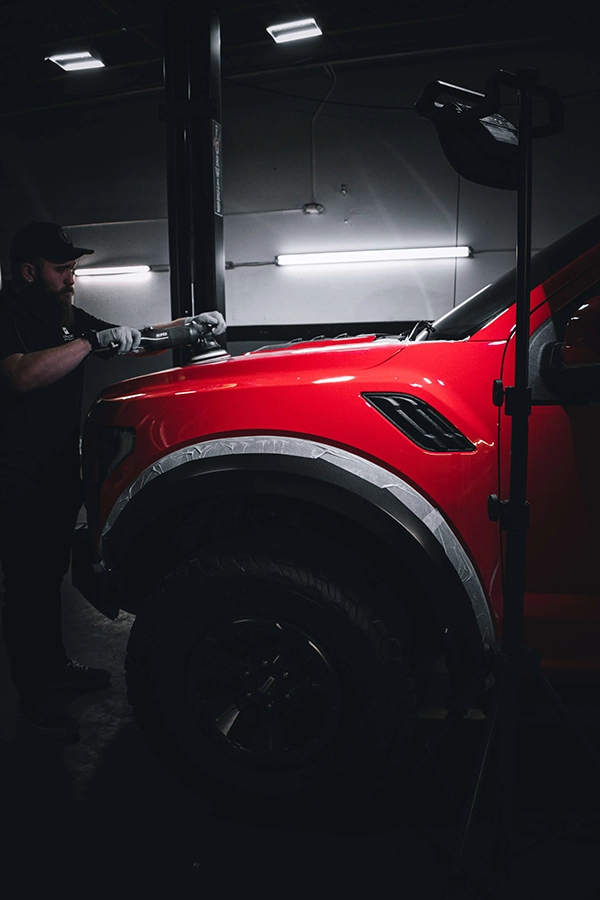
The Ultimate Guide to Ceramic Coating: Introduction, Benefits, and How It Protects Your Vehicle.
Ceramic coating is a state-of-the-art automotive protection solution that provides vehicles with a durable long-lasting shield against environmental elements. This innovative protective coating is designed to safeguard your vehicle’s paint from harsh UV rays, acid rain, bird droppings and contaminants. Its hydrophobic properties make it easier to clean and maintain, while offering a brilliant and glossy finish that enhances the appearance of your vehicle. With the expert application of ceramic coating in Adelaide, you can enjoy prolonged protection, reduced maintenance, and a stunning shine for your car, ensuring it remains in prime condition even in the city’s diverse and sometimes challenging climate.
Why we at Madcoupe Pty Ltd believe Gtechniq Crystal Serum ceramic coatings to be the best range of ceramic coatings currently available?
Gtechniq ceramic coating provides high-performance protection for your vehicles paint and keeps it looking new and glossy for years, if maintained correctly.
Ceramic coatings are liquid polymers applied by hand which bond to the paint creating a hard layer that protects against environmental damage, including UV fading, bird/bat droppings, tar, water spots, light scratches, and swirls.
Gtechniq ceramic coating is made up of nanoparticles that are so tiny they fill the pores of your car’s paint creating a (water repellent) hydrophobic and super glossy surface.
It’s this hydrophobicity that gives your paintwork that beautiful beading or sheeting effect when you spray it or it rains!
It also prevents dirt and other contaminants from sticking to it, making it easier to clean.
Compared to the other products Gtechniq Crystal Serum has quickly developed a strong following here in Australia due to its high quality, consistency of application and its solid warranties.
How Long Does a Gtechniq Coating Last?
Gtechniq do a range of ceramic coating products to suit different budgets and needs.
Gtechniq Crystal Serum Ultra is their premium coating which is guaranteed to last 9 years.
Gtechniq Crystal Serum Light – is also an excellent (and slightly cheaper) option, with a 5-year guarantee.

Ceramic Coating VS Wax: Make the right choice for your car.
Traditional wax and ceramic coatings are both used to protect a vehicle’s paint. But they differ in their composition, durability, and application.
Traditional wax provides a glossy finish and typically lasts for a few months, requiring frequent reapplication. It is less durable compared to ceramic coatings and may require more effort for maintenance.
On the other hand, ceramic coatings like Gtechniq’s Crystal Serum Ultra, provide a long – lasting, durable layer of protection, often lasting years (5 years / 9 years). They create a semi-permanent bond with the vehicle’s paint, offering superior resistance to UV damage, chemical stains, and scratches. Ceramic coatings also provide a hydrophobic effect, repelling water, and dirt more effectively than wax. Ceramic coatings provide a longer lasting and more robust shield for your vehicle’s surface.
Caring for your ceramic coated vehicle: Maintenance Tips
Here are some key maintenance tips to help you care for your ceramic coated vehicle effectively:
- Avoid automated car washes – While ceramic coatings provide protection, automated car washes with abrasive brushes can be harsh on the coating. opt for hand washing (bucket wash) or touchless car washes (laser wash) to preserve the coatings integrity.
- Avoid harsh chemicals – Refrain from using harsh chemicals such as acidic cleaners, on your coated vehicle. Instead use pH-neutral or ceramic coating safe products to prevent any damage to the coating.
- Use a ceramic coating booster – Application of a ceramic coating booster can be help maintain the hydrophobic properties of the coating.
- Gentle washing – Use pH-neutral car shampoos and soft microfiber wash mitts to avoid damaging the coating.
- Timely removal of contaminants – Swiftly remove bird droppings, tree sap, and other contaminants to prevent them from etching into the coating.